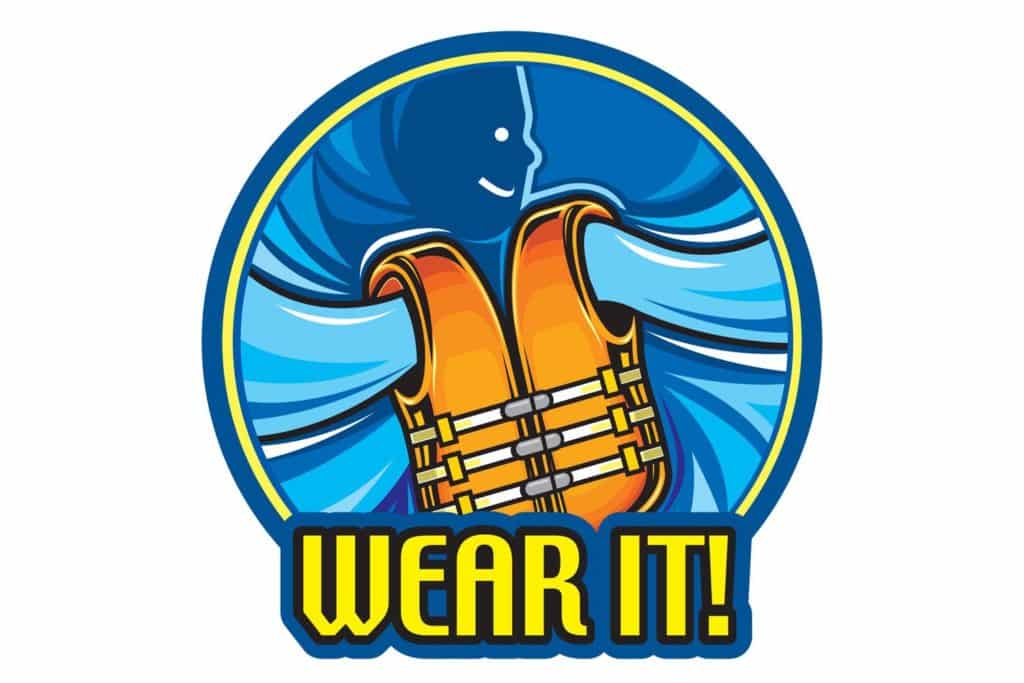Most boaters know they’re required to have a U.S. Coast Guard-approved wearable life jacket on board for every person on their boat. Boating safety advocates recommend that all boaters and passengers not only have a life jacket, but ‘Wear It!’ at all times while boating.
Accidents on the water can happen much too fast to reach and put on a stowed life jacket. Drowning is the reported cause of death in three-fourths of all boating fatalities – and 84 percent of drowning victims in recreational boating accidents were not wearing a life jacket in 2013.
The good news is that today’s life jackets are much more comfortable, lightweight and stylish than the bulky orange style most boaters know. Life jackets that use inflatable technologies are cool and comfortable. They may resemble a pair of suspenders or a belt pack. Many inflate automatically when immersed in water.
There are life jacket styles available for almost any boating activity.
For cruising in an open motorboat: Comfort is key – choose a life jacket you’ll want to wear. For ages 16 and older, inflatable life jackets are a great option.
For fishing: Vest-style life jackets come with features such as pockets and clips to replace the fishing vest and keep the angler safe.
For personal watercraft and water sports: Inherently buoyant lighter-weight life jackets are rugged, with multiple buckles and clasps to keep them secure after impact with the water.
For hunting and cold weather: Full coats and suits are available in camouflage colors for waterfowl hunting and for those who boat when air and water temperatures are cool.
For paddling: Special life jackets are designed with large openings for arms to allow ease of movement.
For children: Virtually all styles available are sized especially for children – some with cartoon characters, straps for pulling children from the water and high-visibility schemes.
For pets: Life jackets are even available for our four-legged friends. It’s helpful to purchase one with a handle on top to easily pull your pet out of the water, if needed.
No matter what the activity or style chosen, the most important thing is this: Remember to grab a life jacket and ‘Wear It!’
Looking for a life jacket?
Today’s life jackets come in a variety of shapes, sizes, colors and materials. No matter which life jacket you choose, be sure it’s right for YOU, your planned activities and the water conditions you expect to encounter.
Try It On
- Check the manufacturer’s ratings for your size and weight.
- Make sure the life jacket is properly zipped or buckled.
- Raise your arms straight up over your head while wearing your life jacket and ask a friend to grasp the tops of the arm openings, gently pulling up.
- If there is excess room above the openings and the life jacket rides up over your chin or face, it does NOT fit
- properly. A snug fit in these areas signals a properly fitting life jacket.
Fit Facts
- It is extremely important that you choose a properly fitting life jacket.
- Life jackets that are too big will cause the flotation device to push up around your face, which could be dangerous.
- Life jackets that are too small may not be able to keep your body afloat.
Important Reminders
- Make sure your life jacket is U.S. Coast Guard approved.
- Double check that your life jacket is appropriate for your favorite water activities. Read the label!
- Take the time to ensure a proper fit. A life jacket that is too large or too small can cause different situational problems.
- Check your life jacket is in good serviceable condition, with no tears or holes. Test to make sure it works properly.
- Life jackets meant for adult sized people do not work for children. If you are boating with children, make sure they are wearing properly fitted, child-sized life jackets based on their weight. Do not buy a life jacket for your child to “grow into.”
On recreational boats underway, children under 13 years old must wear a Coast Guard approved life jacket unless they are below decks or in an enclosed cabin. Some state laws vary – check with your local Marine Law Enforcement Authorities.
Click here for more information on safety at sea.









